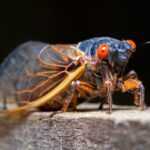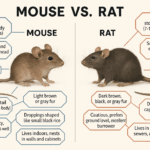You keep setting mouse traps. You’ve read all the directions. You’ve used every type of bait you can think of—all variety of cheeses, peanut butter bait (both crunchy and creamy), catnip, snickers, ding-dongs, ho-hos, stove-top stuffing.
But those crafty little critters either:
- Have the audacity to ignore your hard work and avoid the trap, or
- Somehow get the bait without triggering it.
You’ve just realized you’re running a self-serve mouse restaurant. It’s kind of like you’re in a Looney Tunes cartoon, and Speedy Gonzalez is just making you look the fool.
How can you keep those darn mice from pooping all over your kitchen, then laughing all the way to their nest with your $50 Gruyere cheese sampling?
What Are You Doing Wrong?
Well, first, stop using super expensive cheese. That’s just silly.
Second, don’t feel bad. Mice are surprisingly clever. They are trying to sneak away with your bait. It’s free food, after all. And because mice are pretty good at learning and adapting, they can catch on to what you’re doing. Identifying areas of mouse activity can help in placing traps more effectively.
Then, those sneaky little critters go back to their nests and communicate their best mouse-trap hacks to their buddies using a series of squeaks, tail shakes, and urine signals—that’s right, urine signals.
Choosing the Right Mouse Trap
Choosing the right mouse trap can feel like navigating a maze—pun intended. With so many options on the market, it’s easy to get overwhelmed. But fear not! We’re here to help you make an informed decision that will have you catching mice like a pro.
Types of Mouse Traps
When it comes to mouse traps, variety is the spice of life. Here are some of the most common types you’ll encounter:
- Snap Traps: Ah, the classic snap trap. These traditional wooden traps snap shut when triggered by a mouse. They’re effective but can be hazardous to pets and children, so placement is key.
- Glue Traps: These traps use a sticky substance to catch mice. They’re non-toxic and easy to use, but can be inhumane if not checked regularly. No one wants to deal with a suffering mouse.
- Electronic Traps: High-tech and humane, these traps use sensors to detect a mouse and deliver a lethal dose of electricity. They’re quick and efficient but can be a bit pricey.
- Humane Traps: For the kind-hearted, these traps capture mice alive, allowing for release outside. They’re a great option if you don’t want to kill mice, but they do require more time and effort.
All Hope is Not Lost—You Can Outsmart Your Mouse Population
Yes, mouse population. We regret to inform you, that if you’ve seen one, or even just the evidence of one, you’ve got a population. Mice are social creatures. And they breed like . . . well, like mice.
Multiple catch mouse traps, also known as catch and release traps, can be effective in dealing with a large mouse population. These traps are designed for the humane capture and relocation of rodents, featuring a one-way entry that prevents mice from escaping. It is important to check these traps daily to ensure timely relocation of captured mice.
A mouse can start reproducing as early as 6 weeks and can have 5-10 litters a year. You don’t have to be a math major to figure out that you could have a problem on your hands pretty quick.
Here are Common Mouse Traps Mistakes You Might Be Making (And How to Fix Them):
- You are touching the mouse trap with your bare hands. Mice have a remarkable sense of smell. And your scent on the mouse trap could be the reason they are avoiding it. So when you are setting your traps, use gloves. It will keep your manly (or womanly) scent off. Consider using a mouse snap trap for effective results.
- Your traps look suspicious. Mice are skittish and can be suspicious of new things. So try introducing the trap without setting it. That’s right, bait your trap as usual, but don’t set it. Let the mice get nice and cozy with the free meal-delivery machines. Then set your traps and see what happens. Using traps with a removable bait cup can make this process easier.
- You are using the wrong bait. Saturday morning cartoons taught us that mice like holey cheese. But mice actually prefer nuts, seeds, and sweets. The best baits are sweet and sticky—like nut butters and maple syrup. But chocolate, bacon, soft cheese, or sticky gum drops can also work. To sweeten the deal and make sure little mousy doesn’t just snitch and run, add a seed to the center of your sticky bait. This will tempt them further into the trap. The further in, the less likely to escape. When using traps, ensure they allow for easy disposal of dead mice and dead mouse without direct contact.
- You are using too much bait. If you load up your mousetrap with too much bait, it’s easy for a mouse to grab and run without springing the trap. Pea-sized bait is all you need.
- Your “location, location, location” is no good. Make sure you have your traps where mice will find them. They leave evidence (poop) of where they’ve been, so let the droppings be your guide. Because mice have a fear of wide-open spaces, they will scamper along the walls and places they can stay hidden. Always place your traps next to walls or in concealed places along mouse runs.
- You only have one trap. Because you likely have a family of mice living in your walls, crawl space, or other sheltered area, you should set multiple traps. Space them out every 2 to 3 feet in high-traffic mouse zones. Then be ready for a big morning. Consider using a variety of traps, including bucket traps, to increase your chances of success.
- You haven’t done any mouse-in-the-house prevention. Do everything you can to prevent mice from coming into your home. Mice can squeeze through openings as small as a quarter of an inch. Do some inspection to see where they might be entering. Look for cracks and openings around plumbing, in walls, and around doorways. Then plug those areas with steel wool. Remember that easy food will attract mice. Sweep up crumbs, wipe down counters, take out your trash, don’t leave pet food out overnight, and store grains and cereals in air-tight containers.
- You are not using disposable traps. Disposable traps are convenient and hygienic, allowing you to dispose of the entire trap without touching the dead mouse.
- You are not disposing of glue traps properly. When using glue traps, remember that the entire trap can be disposed of together, making the process straightforward and sanitary.
Mouse Trap Effectiveness
Effectiveness is the name of the game when it comes to mouse traps. Here’s a quick rundown of how different traps stack up:
- Snap Traps: Great for catching single mice, but not ideal for multiple mice. They’re reliable but require careful placement.
- Glue Traps: Perfect for those hard-to-reach areas, but remember to check them regularly to avoid inhumane situations.
- Electronic Traps: These are the Ferraris of mouse traps—quick, humane, and effective. Just be prepared to shell out a bit more cash.
- Humane Traps: Effective for catching mice alive, but they do require a bit more patience and effort on your part.
Safety Considerations
Safety first! Here’s what you need to know to keep your home safe while trapping mice:
- Snap Traps: These can be hazardous to pets and children if not placed carefully. Always place them in areas that are out of reach.
- Glue Traps: While non-toxic, they can cause suffering to mice if not checked regularly. Use them with caution.
- Electronic Traps: Generally safe to use around pets and children, but they come with a higher price tag.
- Humane Traps: Safe for everyone, but they do require more time and effort to use effectively.
Mouse Trap Technology
Mouse trap technology has come a long way since the days of simple wooden traps. Today’s traps are more advanced, effective, and user-friendly than ever before.
Advancements in Mouse Trap Design
Modern mouse traps boast several advancements that make them more effective and easier to use:
- Improved Trigger Mechanisms: Today’s traps have more sensitive and effective trigger mechanisms, increasing your chances of catching mice.
- Increased Durability: Made with durable materials, modern traps are built to last, saving you money in the long run.
- Improved Safety Features: Many modern traps come with safety features that make them safer to use around pets and children.
- Increased Effectiveness: Some traps are now capable of catching multiple mice at once, making them more efficient.
Some popular mouse traps that incorporate these advancements include:
- The Tomcat Press ‘N Set Mouse Trap: This trap is considered the “better” mousetrap and is easier to set and empty than the competition.
- The Victor Electronic Mouse Trap: A discreet and effective option that delivers a strong shock to kill mice quickly and humanely.
- The Iiwey Humane 12-inch Mouse Trap: Spacious and clear housing lets you see at a glance when it’s time to empty the trap.
By choosing the right mouse trap and staying up-to-date with the latest technology, you can outsmart even the craftiest of mice. Happy trapping!
How to Know When You Need Professional Pest Control Help
Mice will not leave your home on their own. If you see evidence of mice, you need to take care of it before it gets out of control.
Besides just being “icky,” mice can cause home and business owners all sorts of problems. They can be carriers of dangerous diseases. They will chew through just about anything looking for materials for their nests. Let them be, and you risk damage to furniture, cabinets, appliances, and even wiring, which puts you at risk for a fire.
Everyone has a different threshold for what they are willing and able to do to get rid of mice. If your mouse problem is overwhelming you, or if you just don’t want to deal with it yourself, PURCOR can help.
Need help getting rid of mice? Call PURCOR now for your peace of mind!
"*" indicates required fields
"*" indicates required fields




